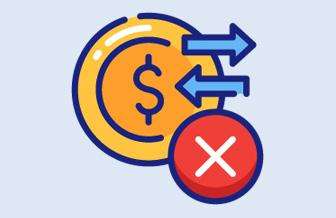Four systems to put in place to increase profits
7 min read
Posted on Aug 30, 2021

Successful small business owners are those who are continually seeking ways to increase their net profit. For many small businesses, their initial first thought is to increase revenue.
However, it’s often small incremental changes across a number of business areas that creates exponential improvements to the bottom line. There are four processes you can implement, without needing to increase sales, to boost your profits.
1. Increase prices regularly
Sounds obvious, but you should schedule to review prices on a regular basis. Small incremental increases are easier for customers to accept. Even a small price increase (think 1-5%) can raise your profits by a significant amount. It’s small enough not to cause too much disruption, but if it’s every product and service then the volume could be enough to show significant gain.
The key is to make pricing increases part of your business processes. Rather than on an ad hoc basis during the year, you’ve thought about when the best time is, the justification to customers and how you’ll communicate it. Of course, if the increase is small enough, you may not even need to tell anyone. They may not notice.
2. Check gross profit
This is a key factor in your business and there are several ways to improve it.
Develop systems that:
- Lower the cost of goods sold (COGS) by either using lower cost materials that don’t affect the end result (unbranded standard materials compared to branded). You can also try to re-negotiate the deals you have with suppliers, which can reduce your costs and streamline your delivery procedures.
- Reduce waste. Conduct an exercise to spot any areas where there is excess waste, and then devise ways to minimize.
- Look at increasing your marketing of premium or higher margin products and learn the art of up-selling and cross-selling.
- See if a low-profit product might bring other business from a major, highly profitable customer.
3. Conduct a product review
Take a look at your products and think of ways to maximize their profits. You can increase their prices, bundle them with other products to create attractive packages, eliminate those that aren’t selling, promote the ones that are and think of new products or services you could add to the mix.
You could also research new products and services, which could open up a new type of customer. Proper analysis of your sales data means that you can look at what your customers are buying and then think of other products or services that could be sold along with them.
- Conduct an inventory review. Eliminate products that aren’t selling well – you can achieve this by having a sale to get rid of them, which will bring more cash into the business.
- Identify the products that are selling well and invest more in marketing them. Then try and come up with new products that might compliment those that are already popular and as mentioned above, bundle them together in packages.
- Stock premium versions of an existing product. You’ll be surprised what people will pay if offered higher priced items. Identify any new products or services that you could add on, that you currently don’t stock or provide. You should always be reviewing what you sell.
4. Develop systems that help become more efficient
Spotting ways to increase efficiency means reviewing all your systems and look for ways they can be improved. The better the system, the more efficient and productive it will be. Take a look at your customer base. Do you have habitually late or non-paying customers? It's important to:
- Regularly review your debtors. Follow up outstanding debts and tighten up your credit processes so you’re less likely to risk offering credit to risky customers.
- Make sure you’re always paid on time. If your customers owe you money, the faster you’re able to obtain it using effective collection tactics, the better. Ideally, you want to reduce the chance of bad debts and pressure on your business’s cash flow.
- Frequently check cash flow forecasts, streamlining your accounting using good software and implementing clear payment terms and a robust payments process. Make sure the processes are managed properly, with good documentation and templates for common processes like invoicing.
- Regularly monitor your progress over time to ensure you’re still on the right track. Keep an eye on your key indicators and track them regularly. These don’t always have to be financial measures. You may decide that a measure of success is the number of phone calls you make, the number of people that come into your business, or the number of complaints is reducing. Match your progress to internal benchmarks and set those benchmarks so they’re relative to your industry.
- Make the most of technology to streamline processes and become more efficient. For instance, you can make use of video conferencing for meetings instead of spending money travelling to meetings. Also utilize online subscriptions and external contractors to reduce full time employee costs.
Summary
Strong, robust systems that you monitor regularly are a key factor in increasing your profits. The sooner you implement them, the quicker you'll see improvement in your profit margins. It's wise to seek advice when it comes to your business systems, so talk to your accountant or banker about how you can streamline your financial processes.








